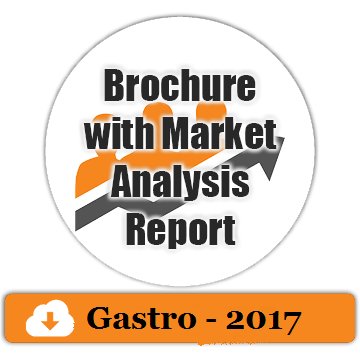
David H Van Thiel
Advanced Liver and Gastrointestinal Disease Center, USA
Title: Subsequent clinical exocrine pancreatic insufficiency, a disease requiring recognition and therapy
Biography
Biography: David H Van Thiel
Abstract
Gastroesophageal reflux is a condition that occurs when gastric (GERD) or gastroduodenal (EDRD) content refluxes into the esophagus. Depending upon the degree to which duodenal secretions contaminate the gastric refluxate the refluxed material can be acidic (pH less than 4 for gastric reflux), mildly acidic (pH ranging between 4 but < 7, mildly ascitic), or alkaline (pH greater or equal 7). The patient's symptoms are a reflection of the degree of tissue inflammation plus or minus tissue injury (erosions or ulceration) produced rather than the specific nature of the refluxed material. Continued uncontroled/chronic reflux leads to the complications of GERD/GDRD consisting of inflammation that can progress to erosions, ulcerations, or scarring (stricture), mucosal metaplasia (Barrett's esophagus) or adenocarcinoma.
GERD is a common disorder with a world prevalence that somewhat between 10 and 30% of the population being less commonly seen in Asia as compared to Europe or the Americas. Clinical GERD is estimated to be seen in 7% of the population is manifested as ‘ heartburn" and accounts for 4% of the visits to primary care physicians and is the most common reason for referral to gastroenterologist.
Complicated GERD is manifested by “alarm signals” consisting of weight loss, odynophagia, dysphagia, regurgitation, anemia and a variety of extra- esophageal symptoms ascribed to GERD consisting of hoarseness, laryngitis, bronchitis, dental enamel erosion, otitis media, sinusitis, pseudo- angina, sleep dysfunction, asthma, pneumonitis, and pulmonary fibrosis. In addition, as a consequence of the almost universal use of proton pump inhibitors for the treatment of GERD an increase in cases of community-acquired and hospital-acquired pneumonia have been reported in the elderly as a direct consequence of the reduction in the acid secretion by the stomach and the resultant increase in viable gastric microbial concentrations.
Risk factors for GERD are common in the population and consist of the existence of a hiatal hernia, obesity, type 2 diabetes mellitus, hypertension, hyperlipidemia, advanced age, chronic hiccups, asthma, and less often sinusitis, chronic recurrent otitis media and dental erosions. Because heartburn can be treated very effectively with proton pump inhibitors there is no need for endoscopy or other invasive diagnostic procedures to establish a diagnosis in cases of simple heartburn, GERD, or GERD. The use of endoscopy, pH monitoring, with without impedance determination, and esophageal manometry are reserved for those individuals manifesting "alarm symptoms", those who have failed treatment with a proton pump inhibitor and those being considered for reflux surgery. Endoscopy is used to grade the severity of reflux inflammation and the identification of erosions or ulcerative disease and assess the patient for the more severe or advanced complications consisting of stricturing, Barrett's esophagus and/or adenocarcinoma. Ambulatory pH monitoring is used to document reflux and define its character (acid, mildly acid, or alkaline), its frequency, and duration as well as its relationship with symptoms as reported by the patient. Manometry enables a quantitative assessment of esophageal motility and measurement of the frequency of transient esophageal relaxations, and the duration of the reflux exposure as well as the ability to rule out the presence of achalasia, a contraindication to reflux surgery.
Reproducible therapies of GERD consist of the administration of proton pump inhibitor taken one to 2 hours before the first meal of the day for 12 weeks. Failure to respond to find a symptomatic relief is managed by a doubling of the morning proton pump inhibitor dose with or without the addition of an H2 receptor antagonist at that time which is utilized particularly for those with nocturnal reflux symptoms or sleep apnea.
Prokinetic agents are used exclusively when alkaline reflux is present to prevent alkaline reflux by increasing esophageal contractions (esophageal clearance), to increase lower esophageal resting pressure to prevent reflux , and enhancement of gastric and duodenal motility there by reducing the volume of gastric/duodenal content available for reflux. The use of these agents is limited by the development of tolerance within a short period of time, their short duration of action, and their adverse effects consisting of tremor, fatigue and cardiac arrhythmias.
A large number of abnormal anatomic variations at the gastroesophageal junction and physiologic and neuroendocrine reflexes occur as high frequency in cases of GERD and our thought to contribute to the pathophysiology of the disorder. Disease consist in part consist of lower esophageal sphincter incompetence, reduced resting lower esophageal pressure, the presence of a hiatal hernia, reduced esophageal clearance, increased frequency of transient esophageal relaxations, esophageal, gastric and/or duodenal motility disorders. With the exception of surgical repair of anatomic variants, the identification of these abnormalities has not contributed substantially to the treatment of GERD/GDRD. This is particularly true of the research directed at the identification of neuro- and endocrine mechanisms that could contribute to esophageal dysfunction and reflux.
For those who fail extended proton pump therapy or develop complications including an esophageal stricture, Barrett's esophagus, esophageal cancer, chronic intractable reflux symptoms often manifested as chronic hiccups, or morbid obesity, surgery is the treatment of choice and consists of any variation of the Nyssen procedure done laparoscopically or any of the variations bariatric surgery. These surgical procedures produce long-term benefit but often with minor relapses that necessitate the use of an additional acid inhibitory agent for a PPI or H2 receptor antagonists and occasionally a prokinetic agent as well.
Recently, a large variety of endoscopic procedures consisting suturing the lower esophageal sphincter, Silastic implants and endoscopic fundoplication have been developed with for use in the treatment of GERD, but these agents are agents are still investigational and have not yet obtained FDA approved

